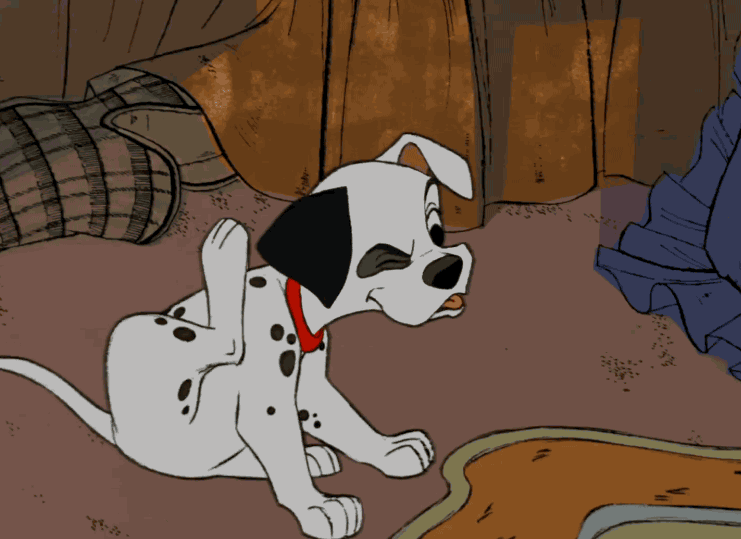One Hundred and One Dalmatians (1961)
Written by Bill Peet
Directed by Wolfgang Reitherman, Hamilton Luske, & Clyde Geronimi
Let’s cut right to it, shall we? As good as this film attempts to be, its quality of animation is so poor that I don’t think it can ever be considered great.
Sleeping Beauty, released two years prior to this film, ended up being a huge financial drain on the company. At a time where the Studio was still trying to rebuild their fortunes, a failure could be ruinous. Walt wanted a feature that would be cost-effective. At the same time, the XEROX process was taking shape, and began to alter how animated movies could be made. Additionally, Walt was becoming disengaged from animation, focusing on his theme park and live action films. All of these things coalesced to bring us One Hundred and One Dalmatians.
Traditionally, the animation process involved 4 steps: an animator would make a drawing on paper. An inker would take that drawing, and trace it onto a clear animation cel. That cel would go to Ink & Paint, where it would get painted (obviously). Finally, that cel would get placed on top of a background, and photographed by the camera. That’s a single image, or frame. With film rates of 24 frames per second, the number of drawings that needed to be produced is absolutely staggering. The new XEROX process cut out the second step, allowing the animator’s drawing to be transferred right onto the cel. And herein lies the problem.
Pay attention to his front legs and paws to see what I mean…
The downside of the XEROX process is, the machine can’t differentiate between the sketch lines and the hard firm lines of the drawing. So, instead of the clean, sleek lines of the earlier features, the result here is a lot of messy lines, giving the film a rough, unrefined, and almost unfinished quality.
There’s other evidence of cost-cutting, as well. There are multiple videos on the internet showing examples of animation being reused across multiple films, but even within the film, there’s repeated animation (indeed, not even 10 minutes into the film, and there is a completely reused reaction shot of Roger). To a lesser degree, a careful eye will see some reused character designs from prior films, particularly from Lady and the Tramp (I don’t have an issue with this, actually, I just point it out as a fun example).
I literally cannot even with how cute this is.
I also don’t want to be misunderstood, it’s not that I hate this film, I really don’t. It’s an adequate entry into the Classics canon, and there’s some great stuff in the film that counterbalances my issues with it. First, musically, it’s a much more contemporary score than their previous films, with this score taking on a much more jazz flavor, which I really enjoy. Also, I have always thought the little parallel between the wedding of Roger and Anita and the ‘wedding’ of Pongo and Perdita to be disgustingly adorable.
Plot- and character-wise, I have no major issues, except that Perdita doesn’t really contribute much to the film (she spends a lot of time announcing the plot (“It’s her! Cruella!”)). Cruella is a fun villain, but I find her motivation to be a little on the weak side (I mean, I like clothes too, but not that much. She needs a hobby (besides attempting to skin puppies, I mean)). Also, Roger gets rich because of his song about her, but isn’t that a strong case for libel?
NOPE. BURN THE HOUSE DOWN.
And finally, OH MY GOD YOU JUST LET IN 101 SOOT-COVERED DOGS INTO YOUR HOME THAT PLACE IS FILTHY AND WILL NEVER BE CLEAN ENOUGH NOW MIGHT AS WELL BURN IT DOWN.
Unfortunately, for me, nothing about the film elevates it above the overall messiness of the look of the film. Added to that, the fact that this process permeates it’s way through the next few films, and one starts to have a recipe for a Studio without a direction, as would soon happen in just a few years.
FINAL GRADE: C+





